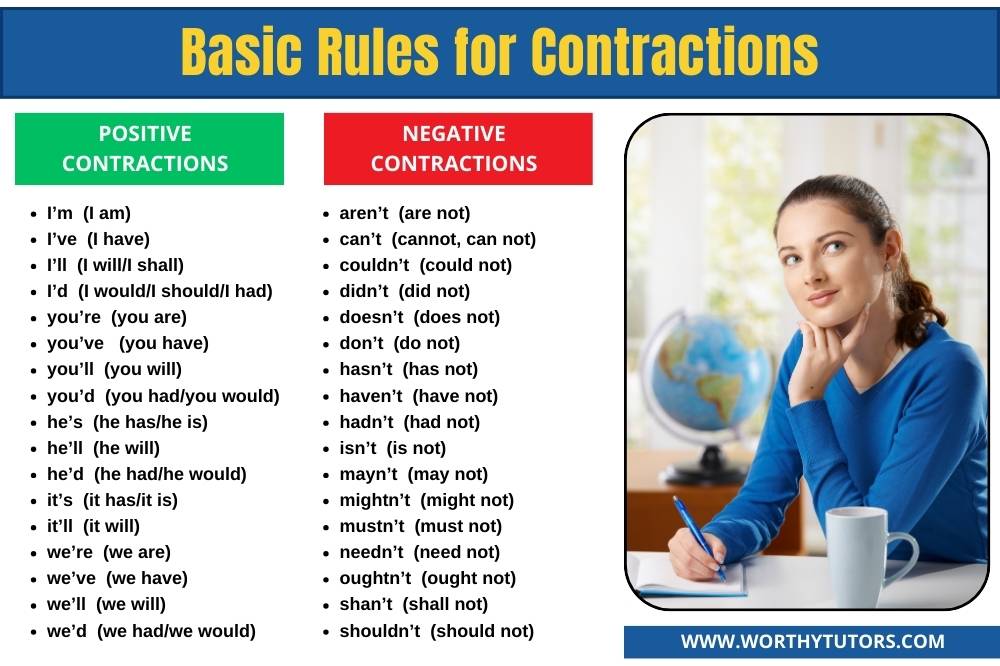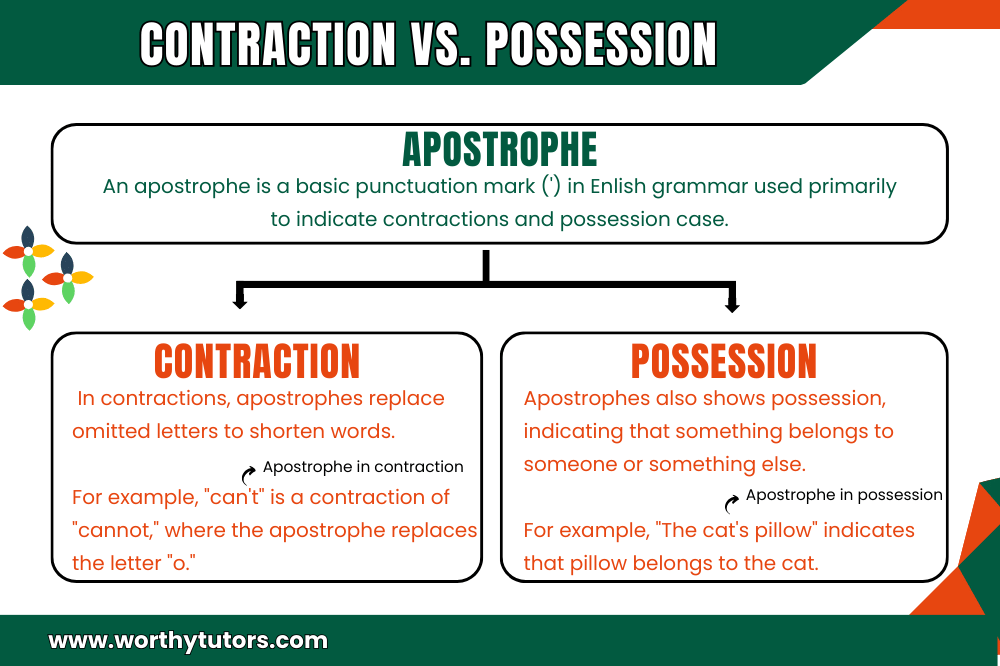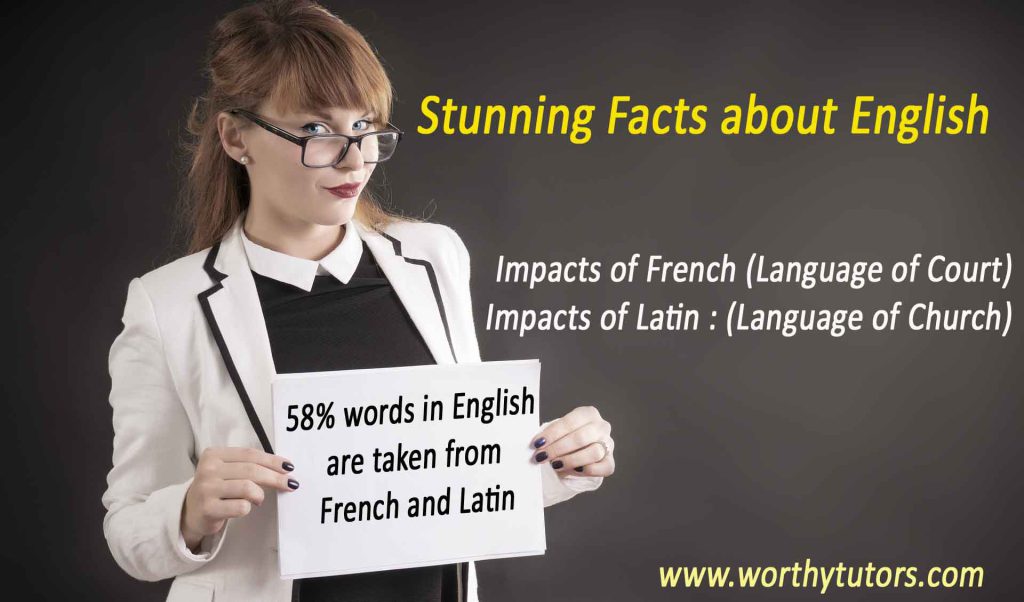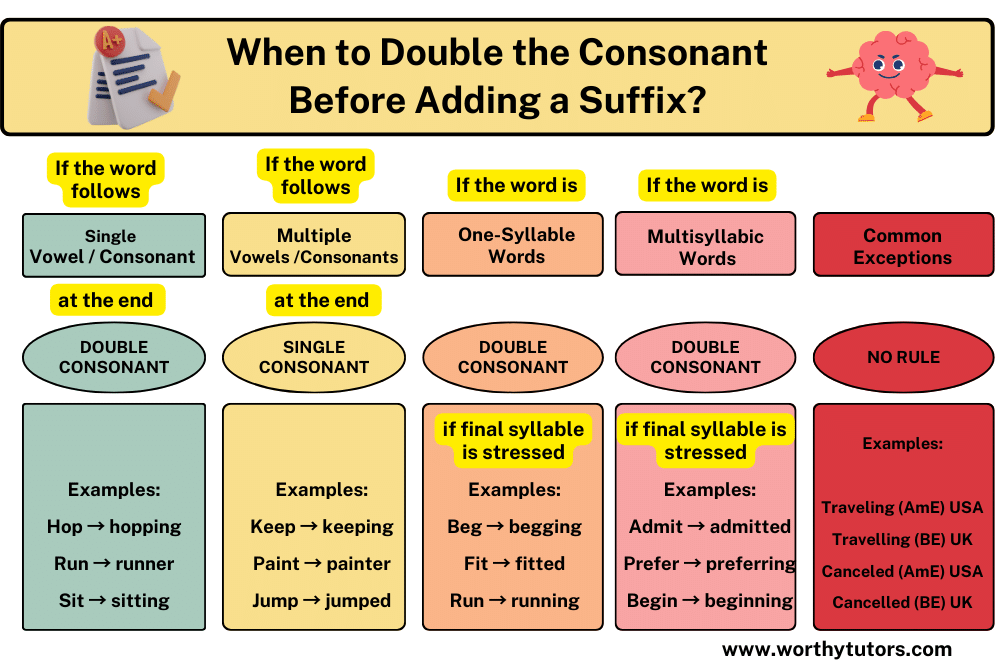
Contractions in English | Basic Rules for Contractions
Contractions in Writing | An Overview of Contraction Words
Contractions are an important element of English writings. To connect two words, an apostrophe is used. Removing some sounds and letters results in a short word called contraction words. People mostly use it in informal writing. They save time and make the reader feel comfortable. This article will go over how to use contractions in good detail.
You cannot contract any word with another one to create a link. Modal verbs and pronouns are usually contracted together. Contraction words act as a single word even when we combine them together. For example, ‘I have’ will be contracted as I’ve. The uses of contractions are as follows:
Contraction Words in Written Form
Contractions actually belong to informal conversations. We avoid to use contraction while writing technically, formally, or on the business level. We are supposed to be strictly professionals which is why we avoid using it.
While writing informally we can use contractions. Writing informally involves writing blogs, comments, texts, or personal emails. However, we can use contraction words while speaking on a professional level.
Contraction Words in Speech Form
Contractions are also commonly used when speaking in formal interactions. A speaker, for example, can contract his words when speaking to an audience. The majority of native English speakers casually use contractions. Two of the most common forms of contractions are formal contractions and informal contractions. Let us go over these two terms in depth.
Formal Contractions
We can use these contractions while we are texting or speaking formally. For example, talking to our colleagues, boss, or professors. There are many contractions like these. But it is better to avoid formal contractions in professional conversations. They create a non-serious effect on the listener or reader. Formal contractions are
Let us as Let’s
Could have as Could’ve
That will as that’ll
Informal Contractions
We use Informal Contractions in normal conversations like when we are talking to our friends. They create a friendly environment. There are many informal contractions that we use in everyday conversations. For example:
I am as I’m
We were as we’re
Where is as where’s
To add contraction words to our sentences, we should first know the rules of contraction.
Basic Rules of Contractions
We cannot just contract any two words together and omit their sounds. Remember contractions are not necessary for sentences. We use it for our own easiness.
Use of Apostrophe
When we are combining two words together an apostrophe is important. It replaces the words and their sounds. For example, ‘We have’ is contracted as We’ve. Question statements can also use contractive apostrophes like “Why would you do that?” to “Why’d you do that?”.
Positive Contractions
Familiarize yourself with positive contractions. Some contractions can mean two to three things. It depends on us in which sense we are using it. It can change the meaning of sentence if we do not use accurate contraction in it. Below is the list of positive contractions:
- I’m (I am)
- I’ve (I have)
- I’ll (I will/I shall)
- I’d (I would/I should/I had)
- you’re (you are)
- you’ve (you have)
- you’ll (you will)
- you’d (you had/you would)
- he’s (he has/he is)
- he’ll (he will)
- he’d (he had/he would)
- she’s (she has/she is)
- she’ll (she will)
- she’d (she had/she would)
- it’s (it has/it is)
- it’ll (it will)
- we’re (we are)
- we’ve (we have)
- we’ll (we will)
- we’d (we had/we would)
- they’re (they are)
- they’ve (they have)
- they’ll (they will)
- they’d (they had/they would)
Just like positive Contractions, negative contractions also exist.
Negative Contractions
When we are combining two words (that gives a negative sense) together with the use of contractive apostrophe it is called negative contraction. In this, we can contract words in two forms.
- We are not there to:
- We’re not there
- We aren’t there
Some negative contractions are below:
- aren’t (are not)
- can’t (cannot, can not)
- couldn’t (could not)
- didn’t (did not)
- doesn’t (does not)
- don’t (do not)
- hasn’t (has not)
- haven’t (have not)
- hadn’t (had not)
- isn’t (is not)
- mayn’t (may not)
- mightn’t (might not)
- mustn’t (must not)
- needn’t (need not)
- oughtn’t (ought not)
- shan’t (shall not)
- shouldn’t (should not)
- wasn’t (was not)
- weren’t (were not)
- won’t (will not)
- wouldn’t (would not)
Some more contraction rules
One Contraction Word Per Sentence
Keep in mind whether we are using positive contractions or negative ones we cannot use them more than once in a sentence. If we try to put contraction words over and over again in the same sentence, we can disturb its actual meaning. Some people may not be good at reading contractions so they will not be able to interact well because of them.
Positive contractions should appear in the middle of a sentence. Putting them at the beginning or end will damage the structure of a sentence. For example:
“I would have known her” to:
“I would’ve known her” instead of “I’d know her”
Contractions without Contractive Apostrophe
We can contract some words without using a contractive apostrophe. They are mostly used in informal conversations. Some words like these are:
Gonna = Going to
Gimme = Give me
Wanna = Want to
Whatcha = What are you
We can use them while talking casually in everyday life.
FAQs about Contractions in English Grammar
Why do we use Contractions?
We use them to create a flow in our sentences. It makes the words smaller and easier to read. They are appropriate while talking informally.
Is contraction important to use?
No, it is our own choice whether we want to use them or not. However, if you want to appear friendly you can use it otherwise the choice is yours completely. They play a great role in conversations.
Can we use contractions while speaking?
Yes, as long as you are speaking informally. Sometimes, the speaker also uses it while talking formally to create a friendly connection with the audience. We can use contractions while speaking in flow as well so there is not any issue in doing so.
Can we use two contractions in one sentence?
Whether we have a negative contraction or a positive one; it is better to put one contraction per word. By the rules of grammar two or more contractions in one single sentence are incorrect.
Are contraction words two different words?
We combine two different words to make one, but after that, they are considered as one single word.
What is the total number of contractions?
There are almost 90 and above standard contractions till now. A lot of other contractions are there as well but we do not use them commonly.
Is possessive apostrophe the same as contractive apostrophe?
No, they are two different things. The possessive apostrophe is used when we are showing ownership of someone. People mostly confuse it with contractive apostrophe. But there is one main difference possessive apostrophe has a sound of ‘s in the end. For example:
Maria’s purse is beautiful. (Using possessive apostrophe)
He’s going to regret it (Contractive apostrophe)
An Overview
In this article, we went through details about contraction words. Formal contractions and informal contractions are two main categories of it. This article clears the usage of contractions in a simple way. Contractions are good to use but overusing them can be a bad habit as well. We should create a balance between when to use it and when to not use contraction words. Good Reading!
You Might Be Interested In
- Difference Between Inter & Intra
- Types of Affixes in English Grammar
- Most Common Acronyms and Initialisms
- Abbreviation, Acronym and Initialism
- Most Common Acronyms & Abbreviations


